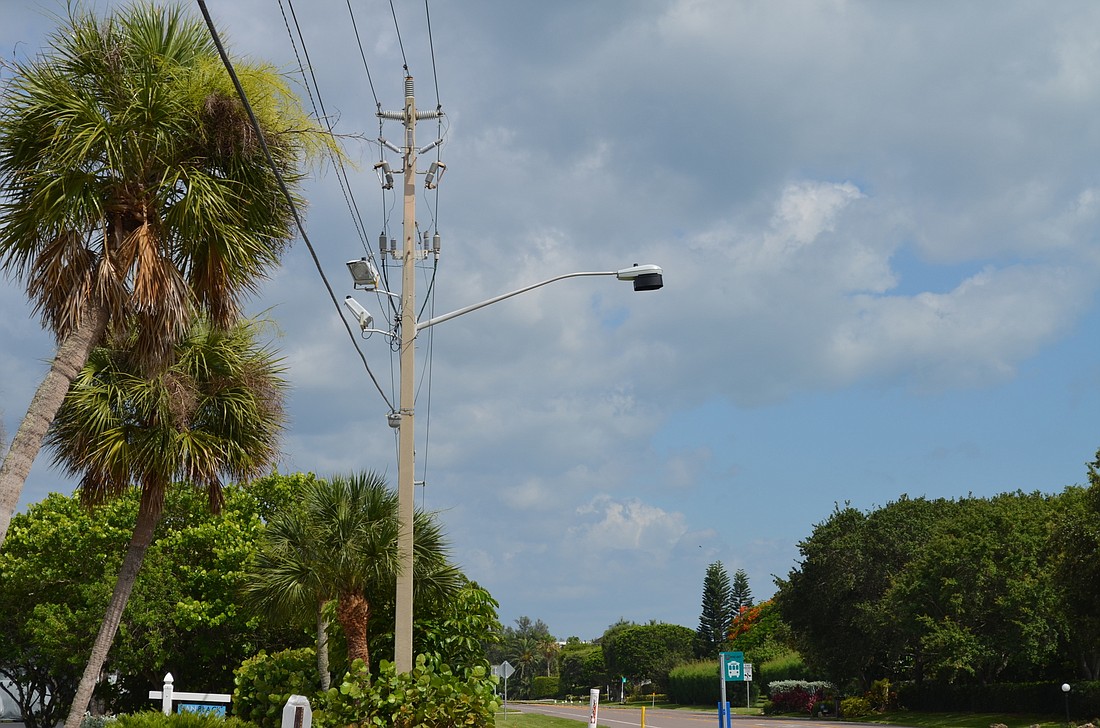- April 16, 2024
-
-
Loading

Loading

If voters approve a $23.4 million project in November to bury power lines and other utility wires along Gulf of Mexico Drive, other opportunities could surface. There will be an 11.5-mile ditch that’s ripe for a fiber optic network that could be installed, according to Town Manager Dave Bullock.
“You don’t get open ditches very often and you should take advantage of them when they are open,” Bullock said.
But is an estimated $500,000 installation of town-owned fiber worth installing, even if it’s done at a reduced cost because the ditch will be dug for utilities?
The Longboat Key Town Commission doesn’t have the answer yet. But it’s intrigued by the possible benefits.
A town-controlled fiber-optic network, a town report states, would allow for access to a wireless Wi-Fi service, state-of-the-art medical monitoring, enhanced security services, better cellular service through Distributed Antenna Systems (DAS) that can connect to the fiber to boost reception, state-of-the-art Next Gen 911 access with GPS location monitoring and updated emergency and disaster notification services.
But, despite the interest, there was static among commissioners at their June 1 meeting, during which DAS Advisers Inc. consultant John Campbell explained how such a network improves cellular service and boasts island Wi-Fi capability.
Campbell said more than 400 communities have a similar fiber-optic network they control, which allows the municipality to help lower the cost of cable, Internet and phone triple play services provided by Comcast and Verizon FiOS.
Younger wasn’t happy with many of the suggestions Campbell proposed for the backbone, including automated parking attendant services and controlled public lighting. He pointed to them as examples of things the town doesn’t need.
“I had a good feeling about this fiber optic up until you started speaking,” Younger said.
Campbell tried to stress that private companies would be interested in accessing the fiber for a DAS service to improve cellular service and Wi-Fi for residents and visitors.
But some dispute that a DAS provider would ever come to the island (see sidebar).
Former Mayor George Spoll pointed out that sworn testimony from cellular providers during telecommunications ordinance discussions more than a year ago revealed that a DAS system isn’t economical for an island that only has an estimated 3,000 residents living on it in the summer months.
Bullock, though, told the commission that a half-dozen companies have approached the town with interest in using a town-owned fiber system to help improve cellular service.
Although commissioners are enticed by the fiber-optic network, they want more concrete facts on what it will provide.
“I agree if we have an open trench it may make sense to install town-controlled fiber,” said Commissioner Terry Gans. “But I don’t have anything here that furthers that belief yet.”
Bullock agreed to report back to the commission with specific examples of what a fiber-optic system would provide.
“Open ditches aren’t enough to justify the expenditure of town funds,” Bullock said.
Longboat Key Wireless Group spokesperson Ed Krepela said there are 17 cooperatives in the state the town can engage with to help advance and connect with companies that help install a fiber optic infrastructure.
“The town will only own the fiber-optic network to ensure we control our own destiny,” Krepela said.
Mayor Jack Duncan said the possibilities for such a network are exciting.
“Having Wi-Fi allows us to plug into different opportunities,” said Duncan, noting that a telehealth service connected to a wireless infrastructure allows doctors to monitor a patient’s health 24 hours a day. “With the average population being 70 here, a resident’s ability to have his blood pressure checked at any given moment is exciting stuff.”
The statement confused several commissioners.
Vice Mayor Terry Gans said that Verizon installed its own fiber optic network along Gulf of Mexico Drive at its own cost.
“Why should the town be where the private sector is?” Gans said. “I’m playing devil’s advocate here.”
Campbell repeated that it would lower the cost of those services without answering the question.
The statement prompted Commissioner Phill Younger to ask the question again.
“Are we going to lay fiber optic network parallel with fiber that already exists there?” Younger asked. “Just answer the question.”
Campbell said he was unaware that Verizon laid its own network and didn’t know where it was located.
“We’re not proposing the town provide triple play (cable/Internet) services,” Campbell said. “We propose that the backbone be available for the private sector to lease or partner with to extend other services wanted in the community.”